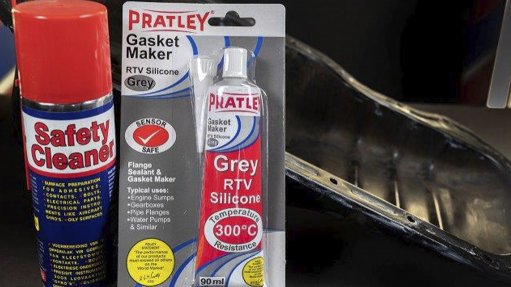
DIY GASKET MAKER The Pratley RTV Silicone Grey Gasket Maker is ideal for gasket making in the automotive repair market
Industrial and do-it-yourself (DIY) adhesive producer Pratley’s latest innovation for cost-effective DIY and professional auto repairs, the Room Temperature Vulcanisation (RTV) silicone grey gasket maker, is ideal for use in the automotive repair market.
This silicone-based sealing compound is tough and elastic for superior sealing, that cures at room temperature and can last many years, depending on the quality of preparation, explains Pratley national sales and marketing manager Mark Bell.
The automotive market is well-suited to Pratley’s adhesives, which comprise a large number of products for a range of applications, he adds.
The RTV Silicone Grey Gasket Maker is sensor-safe and suitable for use in electrical components such as vehicle sensors. The product can tolerate extreme temperatures of between -50 °C and 300 °C for short periods. It is resistant to diesel, paraffin, water, oil and anti-freeze, and is also resistant to petrol for short periods..
Once cured, the product’s non-corrosive nature makes it ideal for use on a multitude of engine components. It can also be used to seal engine sumps, gearboxes, pipe flanges and water pumps.
When applying the gasket maker, the surfaces to be sealed must be cleaned and degreased, which is easily done with Pratley’s Safety Cleaner, Bell suggests.
“Apply the Pratley RTV Grey Silicone Gasket Maker sealing compound in a single continuous bead to only one of the sealing surfaces to ensure a proper seal. The bead should be applied so that there are no air gaps.”
All bolt holes should also be encircled, he adds.
“Assemble the sealing surfaces and tighten the bolts shortly thereafter. Once the RTV Grey Silicone Gasket Maker applies the sealing compound, it will start to cure within 40 minutes and cure fully after 24 hours,” notes Bell.